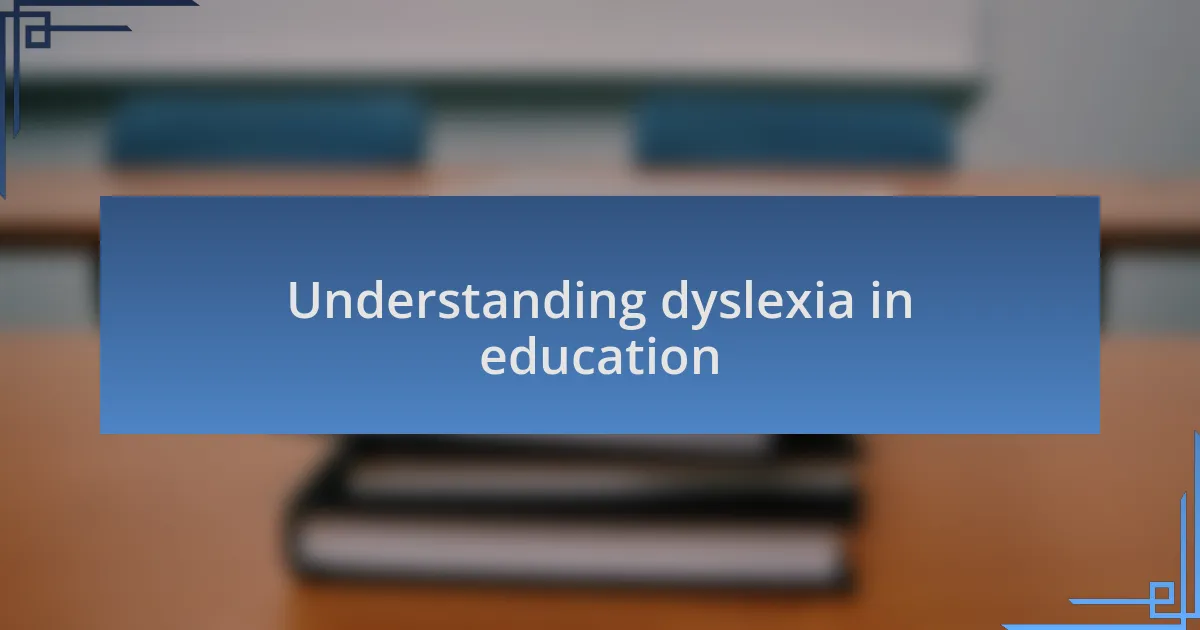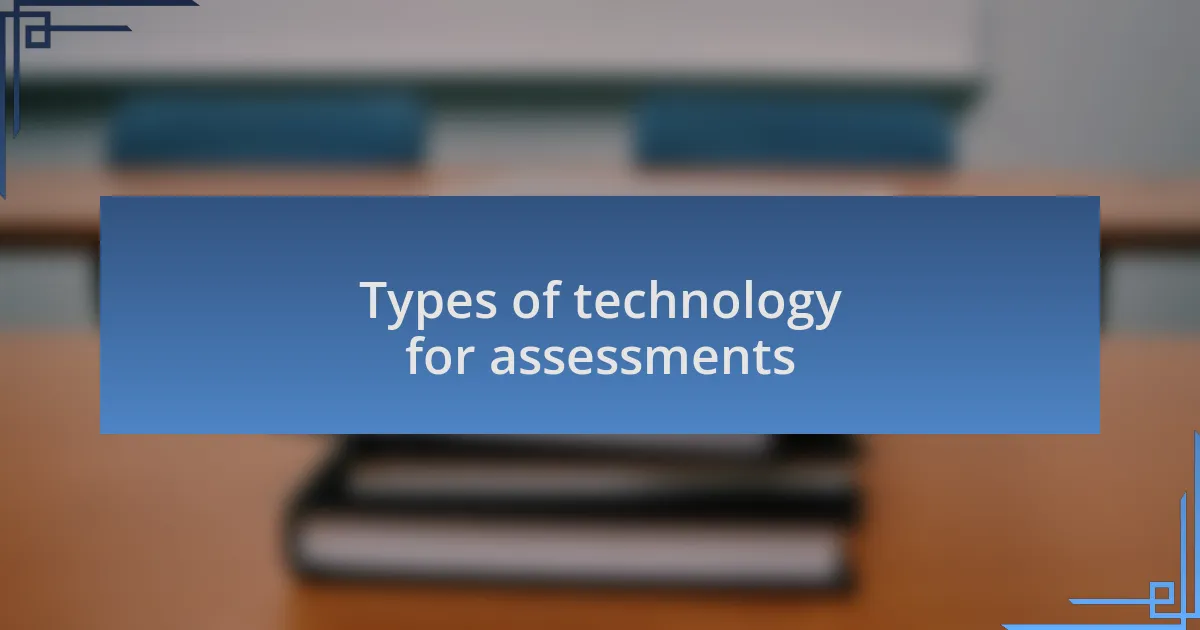Key takeaways:
- Dyslexia affects phonemic awareness and decoding skills, necessitating tailored strategies for effective learning.
- Technology such as speech-to-text software and interactive assessment platforms can significantly enhance learning experiences for students with dyslexia.
- The emotional impact of dyslexia is as important as academic challenges, highlighting the need to foster self-esteem and resilience in affected students.

Understanding dyslexia in education
Understanding dyslexia in education is crucial for fostering an inclusive learning environment. I often reflect on my early experiences with students who struggled to keep up with their peers due to their dyslexia. It’s heart-wrenching to witness the frustration in their eyes, often asking themselves why reading feels like an uphill battle while their classmates seem to breeze through it.
Dyslexia affects individuals in diverse ways, impacting phonemic awareness and decoding skills. I remember working with a young girl who excelled in creative expression but found reading daunting. We celebrated small victories together, like when she read a sentence aloud without hesitation. Those moments reminded me that dyslexia doesn’t define a child’s intelligence or potential; it simply means they learn differently.
It’s important to recognize that the emotional toll of dyslexia can be just as significant as the academic challenges. Have you ever heard the laughter of a child who finally grasps a difficult concept? For me, that joy is indescribable. Such breakthroughs highlight the need for tailored strategies that not only address reading skills but also nurture self-esteem and resilience in students with dyslexia.

Types of technology for assessments
When it comes to assessments, technology offers a variety of tools that can support students with dyslexia. One type of technology I find particularly beneficial is speech-to-text software. I’ve had students who struggled with writing due to their dyslexia, but with this tool, they could express their ideas verbally and see them transcribed effortlessly. It often astonishes me how this simple shift allows their creativity to flow, breaking down a barrier that once felt insurmountable.
Another effective technology is interactive assessment platforms, which provide immediate feedback through engaging quizzes and tasks. I recall a student who would often shy away from traditional tests. However, when we switched to an interactive platform, the gamified elements made assessments feel less intimidating. The joy on his face when he earned a badge for improvement was unforgettable. It’s moments like these that show me how technology can transform the assessment experience for students with dyslexia.
Lastly, assistive reading technologies, such as text-to-speech applications, can be game-changers in providing support during assessments. I remember a boy who had a hard time concentrating on lengthy passages. When he used a text-to-speech tool, he could follow along while listening, which drastically improved his comprehension. It’s remarkable how the right technology can turn a challenging assessment into a more manageable task. What experiences have you had with these technologies?